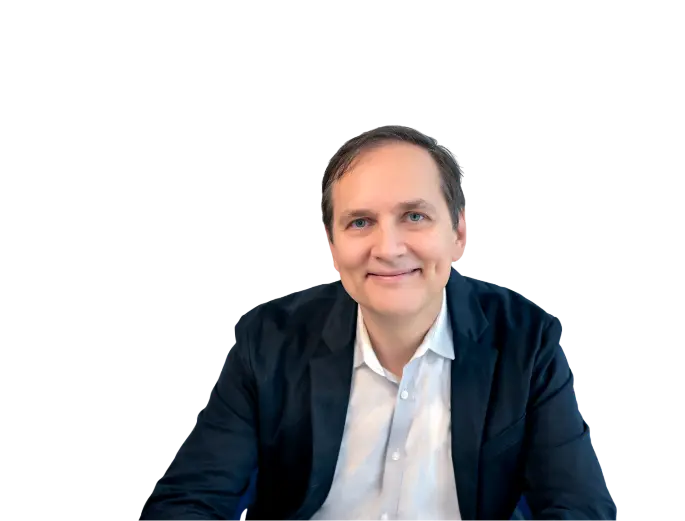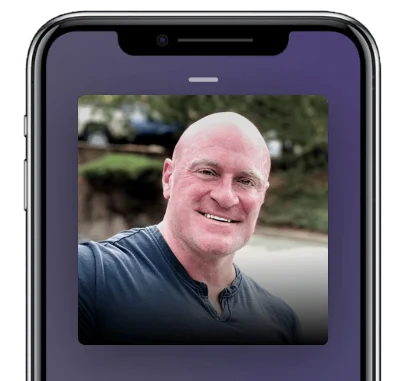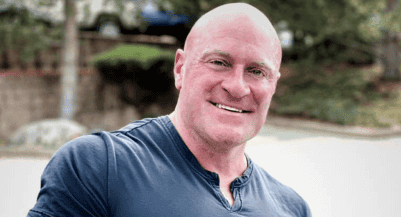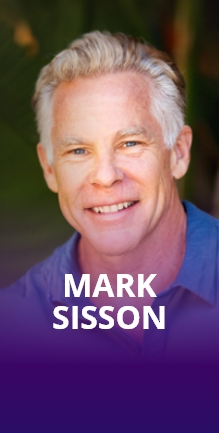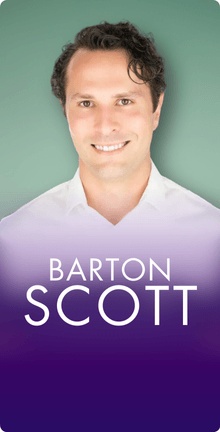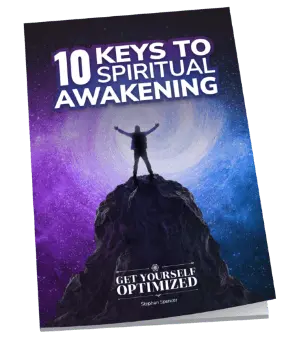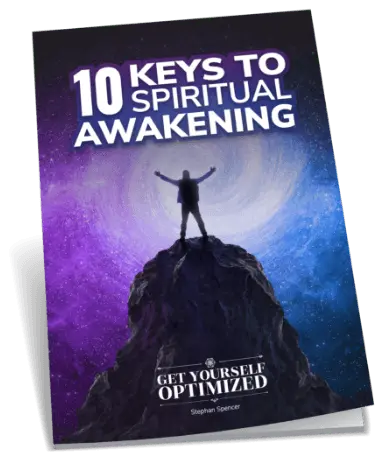Welcome, John!
Stephan, thanks!
Thanks.
Osteoporotic fractures actually end as many lives as breast cancer does.
Getting introduced to the bioDensity machine through Tony Robbins is a very different experience from how you normally would be introduced to it. So, it was developed to treat osteoporosis. We learned about the muscle implications later. So really, where this device came from was my mother was diagnosed with osteoporosis. She was very distraught about it and was very concerned that she was going to fracture a bone, and it would end her life through complications. Osteoporotic fractures actually end as many lives as breast cancer does. A lot of people don’t know that.
Wow.
It’s a tremendous problem. But other than some pharmaceuticals that have some side effects which are worthy of consideration, other than that, there are few options that can affect the disease and treat the disease and potentially reverse the disease. When my mother told me this, I started reading about bone and how bone works and uptake minerals and recalcify to increase their density, the density around the nuclei of these cells. What I came to was compression through high-impact force. Gymnasts load their bodies between 10 and 20 multiples of body weight when they dismount from uneven bars. That’s the highest drop the gymnast will go through, so they absorb these tremendous forces, and their bones adapt as a result.
Now, I’m not going to tell my 65-year-old mother to become a gymnast. But how do we get the benefit of impact without the risk of impact? That was the catalyst for my creating the device. I created a prototype, tested it on my mother, and within 18 months, she was back to healthy bone, but interestingly, this is how Tony Robbins got involved. My mother was one of the first to test it, and I ran out of a test facility with 400 test subjects out of California, Napa Valley. And so, everyone in the test group found that their functional strength changed dramatically. Improved dramatically. For example, my mother, like a lot of women in their 60s, would garden. She would be there sometimes in her garden working soil, and sometimes she would grab these 50 lb. bags of soil or tried to and couldn’t pick them up, so she’d ask me to move around these 50 lb. bags. So one day after beginning to use bioDensity, I saw her out in the garden carrying one 50 lb. bag in each hand.
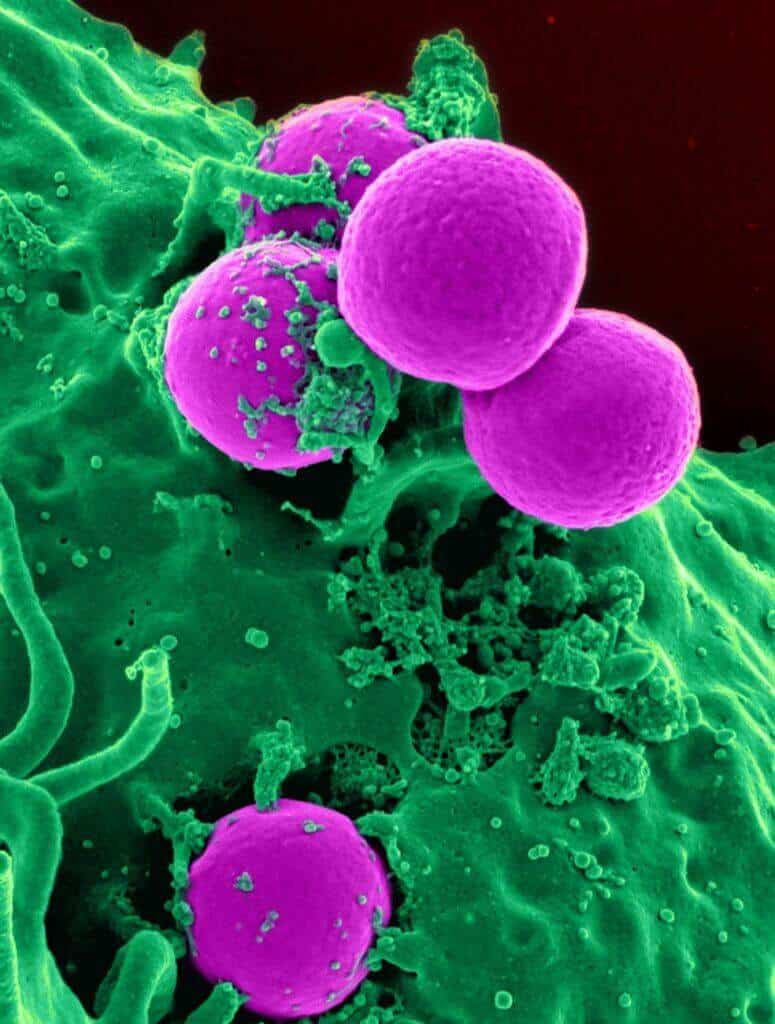
Oh wow.
And that’s not normal for a woman in her 60s. That’s not normal for anyone. Because they’re hard to hold onto; keep in mind that these things don’t have handles, this is just a plastic bag. And I walked out and said, “Mom, when did you get the ability to hold one of those things?” She wasn’t even aware that she was doing it. Normally she would come to get me, but she didn’t even think about it, she just picked it up. She said, “Oh my goodness, I didn’t know I could do this!”. I started looking at these anecdotal reports from these test subjects, and we were looking at their bone, but their functional strength was changing. One of the people in the test group said, “I know Tony Robbins. I’m of an age and level of where I used to be in shape”(this is one of the test subjects talking)” I don’t feel like there are any options for me because there is pain all over my body. But now I’m so much stronger that I’m going to share this with Tony Robbins”. I had a lot of people saying that they knew someone influential and thought, “Yeah, okay.” But this guy really did know Tony! Sure enough, Tony called. That’s how it happened.
Tony was much more interested in the muscular applications than the bone, so that’s how he came to be an investor. The first device he got in his house was actually a prototype, it wasn’t even a production unit, and we went from there. Tony’s improved his ability to produce force. In neurology, we look at the amount that someone can produce force, called force production. It’s not just a measure of strength, it’s a measure of how much muscular energy one can recruit at maximum. And also that’s a measure, because of the way we’re using it, through bone compression, as a measure of bone performance. It’s these measures that we’re publishing research on, I was published last year in Osteoporosis International about axial-loading in bone. And then this latest time on functional bone performance, which is sort of a dynamic look at bone density because when you would use the system and put over a thousand pounds through your upper extremities, I watched you do it.
Yeah, that was pretty cool.
Yeah, pretty cool! No way you could put 1000 lbs safety on your upper extremities without the use of this device. We’re seeing a neurological event. You can produce enough muscular tissue to be able to produce that force. So one of the greatest recruiting events you’ve ever been through. The tendons and the ligaments and the joints and what’s called the joint capsules, when they receive compressive force, they adapt in fibrocartilage. They uptake minerals, and they actually do something similar to what the bone does and make that bone stronger. A lot of people with joint pain can reduce that joint pain and make it better because of the density they’re creating within the joint. We also know that your bone mass could comfortably absorb that 1000 lbs because you voluntarily created it.
So the really cool thing, in addition to being able to utilize your body in ways never possible before safely, it’s like your body knows where to stop so it doesn’t harm itself. I think you told me that if you take your thumb and put it between your two fingers and you squeeze, there’s a point where you’re not going to be able to squeeze any harder before your brain says, “Nope, not going there,” because that would actually break my thumb. There’s a similar situation where your brain does not want you to go to a point where you’re going to hurt yourself with this machine, is that correct?
That’s right, you’ve got it. The physiological process is called neural inhibition. Basically, when you squeeze a fist, you can’t break your own finger because, at some point, enough force goes through your hand when the bones start to feel uncomfortable, and the central nervous system’s limiting the muscle that can be switched on so nothing can go wrong. So all of a sudden, you’re reaching towards a stove, provided that you don’t slap your hand down in an uncontrolled moment you’re reaching toward a stove and you feel the heat, and you realize the stove is on, your reflex will pull away immediately, you don’t even have to think about it. So as you’re loading the body and getting to a level of force that may seem dangerous, it’s really not because your central nervous system will stop the production process before anything bad happens.
As you’re loading the body and getting to a level of force that may seem dangerous, it’s really not, because your central nervous system will stop the production process before anything bad would happen. Share on XWhen you’re doing this exercise, you get to a point where you max out your muscle, and you hold that limit for how many seconds? It’s not very long, if I recall.
Just five seconds.
So four movements, 4 exercises, 5 seconds apiece, so literally in 20 seconds, you’ve got a week’s worth of workout-like weight-lifting workout done.
I don’t know if I’d liken it to weightlifting because it provides a different stimulus and a different adaption.
So would you continue to lift weights and use the machines at the gym to continue to augment the use of the bioDensity machine?
You could.
Do some folks replace their weightlifting with the bioDensity machine?
Yes. That’s what I do, I don’t lift weights.
And you’re really buff, you’re built!
Thank you.
So you built that, and you maintain that with the bioDensity machine. That’s cool. So Tony uses the machine, how often would Tony or the typical user use the machine, or what’s typical?
Once per week.
I know there’s like a technology element with internet-connected servers. Can you explain how that works and why it’s connected to the cloud, and what the benefits are to that?
It’s a cloud-based system, so everyone can take advantage of the normative data. When you use it you are compared to other males your age who have used it as many times as you have. So you are compared with very like individuals, it’s important to point out. There’s no point in comparing someone in their second session to someone who’s used it 40 times. There’s no point in comparing you to someone who’s older than you or younger than you. And that’s an ongoing database, so every session that’s done modifies those normatives on that database.
So if you could tell us a bit more about how this machine differs in how it builds muscle versus the traditional approach of bodybuilders to use free weights and all that? I alluded to it in the beginning, with the volume of the cell instead of the density of the muscle fibers, could you elaborate on that?
bioDensity gets the body or the muscles to go to kinetic fatigue. The fatigue point doesn’t have anything to do with fuel, it has to do with contractile property.
When an individual lifts weights, when you go to the gym and lift weights, you’re exhausting the fuel in the muscle cell. Let’s say you’re doing a set of bicep curls. First, you run of ATP (adesine triphosphate), then glycogen, then creatine phosphate. Once you run out of those fuels, you drop the weight, and blood comes rushing to the muscle and oxygenates the cells. Coming with that is more glycogen, which gets processed with the insulin receptors (or glucose, I should say) and becomes glycogen, creatine, phosphate, and more ATP. So we all know what that feels like. You do a set of pushups, and your arms feel tight. Biodensity doesn’t do any of that. The body is doing that because you’ve exhausted all the fuels in the muscle, so the central nervous system triggers an adaptation to hold more fuel in the muscle. What bioDensity does instead is get the body to go to, or the muscle, to go to kinetic fatigue instead of for a fuel supply reason, the fatigue point doesn’t have anything to do with fuel, it has to do with the contractile property.
You’re engaging the muscle to its fullest degree. When you put a person in a situation where they absorb impact, all those muscles, tendons, ligaments, and bones are optimized. You’re in the best position. This is why your reflexes choose those positions to absorb high-impact force. In those positions, the exhaustion has to do with a lack of structure to continue the contraction. If you remember the SAID principle from bio class in high school, remember that? Specific Adaptation for Imposed Demand. So basically, you’re not going to build a callus on your hand from hanging out in the sun. You’re gonna suntan from hanging out in the sun. The adaptation is specific to whatever you’re doing with the body. So what you get is a sarcoplasmic effect in the fuel, like I was talking about with bodybuilders or recreational weightlifting. You exhaust the fuel out of the muscle and then trigger the body to hold more fuel.
A body that’s trying to compound this, and that’s pretty much how everybody lifts weights. But if you fatigue the muscle from a structural standpoint, the adaptation must be specific to an imposed demand. So the adaptation is more structure inside of the muscle. So protein synthesis takes place, and acting proteins merge to form new myofibers. So the actual tissue, the density of the muscle becomes greater, thereby increasing the number of insulin receptors and, thereby, the instantaneous power that the muscle is capable of. Now, this is a functional change. This is a change in the amount of tissue you have as opposed to the amount your tissue is holding. You were saying that someone can take a break from their therapy for six months and not really lose anything, and that’s interesting.
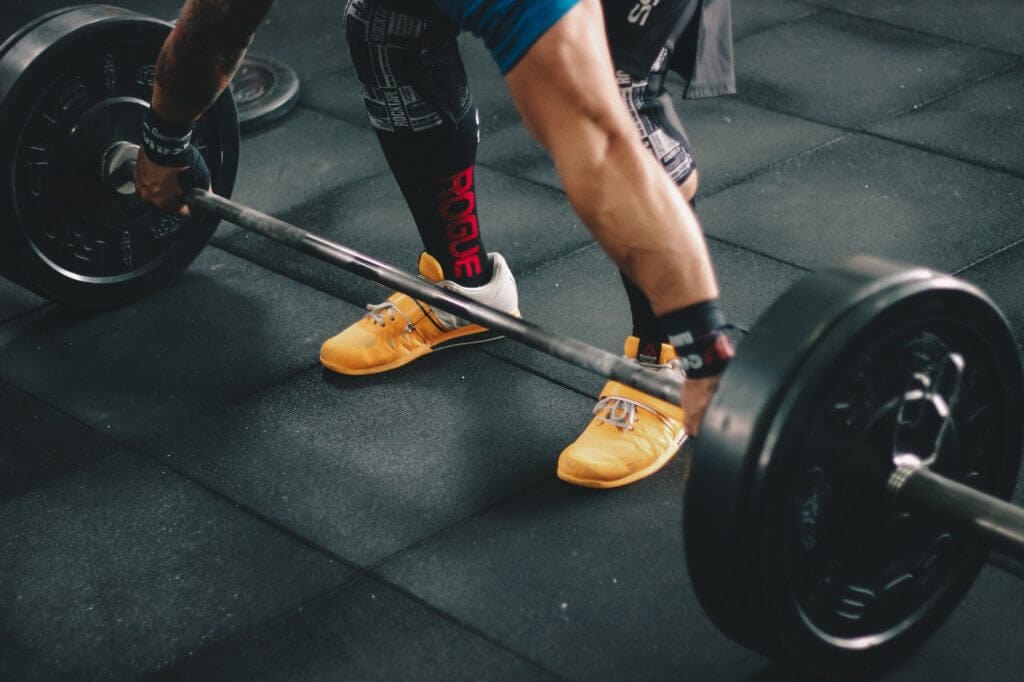
Yeah. You mentioned there are four specific exercises and four movements. And the range of motion is pretty small, I remember getting in the machine and doing what I guess is the equivalent of a chest press, and I just went from almost fully extended to fully extended. Just mere inches in difference from the start to the end position, and just using my full force to get to the maximum. That was a heavy load, but I didn’t feel like I was straining things unnaturally. Tell us a bit more about that. What are the four movements, and what is the range of motion of those movements? It’s just mere inches from beginning to end.
The first movement is the upper extremities. If you were to trip and fall, you’d put your hands out in front of you and brace for impact. Your hand would be aligned with the clavicle, and there’s be 120 degrees of inclusion between the lower arm and the upper arm. The second movement lower extremities. The 120-degree angle behind the knee in a leg press-type format. But you just sort of walk out, so you’re going from 120 degrees to 150 degrees as you go through the compression, and as you’re saying, you just sort of straighten out, you’re actually able to compress bone. There’s actually a cool picture on the bioDensity website that shows axial bone compression on a post-menopausal woman. She was one of the test subjects in the study. You can see her putting 10 multiples of her own body weight through her lower extremities. It’s really important to point out when I speak at medical conferences I point that out right out of the gate, so someone realizes we’re not talking about weightlifting. We’re talking about something totally different. 10 multiples are something that not even athletes can pull off. The only activity where you do that is high impact. So it’s the benefit of high impact without the risk.
And this is something that all people of all ages, and all genders should be using the machine and maximizing their capacity in this way because it will futureproof you from falls, osteoporosis, due to old age and stuff. Even if you are already old and frail, you can safely use this technology to add bone to reverse some of that damage.
Correct.
You mentioned your site already, biodensity.com, What sort of resources could one find at your site? You mentioned some research you published, would that be where they would go to read those research articles?
The website is written so that a patient can understand what’s going on as well as a physician who might want to add bioDensity to their practice, they can look at it in five minutes and understand what they need to do and how it works and how they need to go about applying the practice. But if someone wants to read in-depth, the study is on there.
So different practitioners are looking into bringing in your technology for their patients. What kind of practitioners are we talking about? Chiropractors, personal trainers, gyms, what sort?
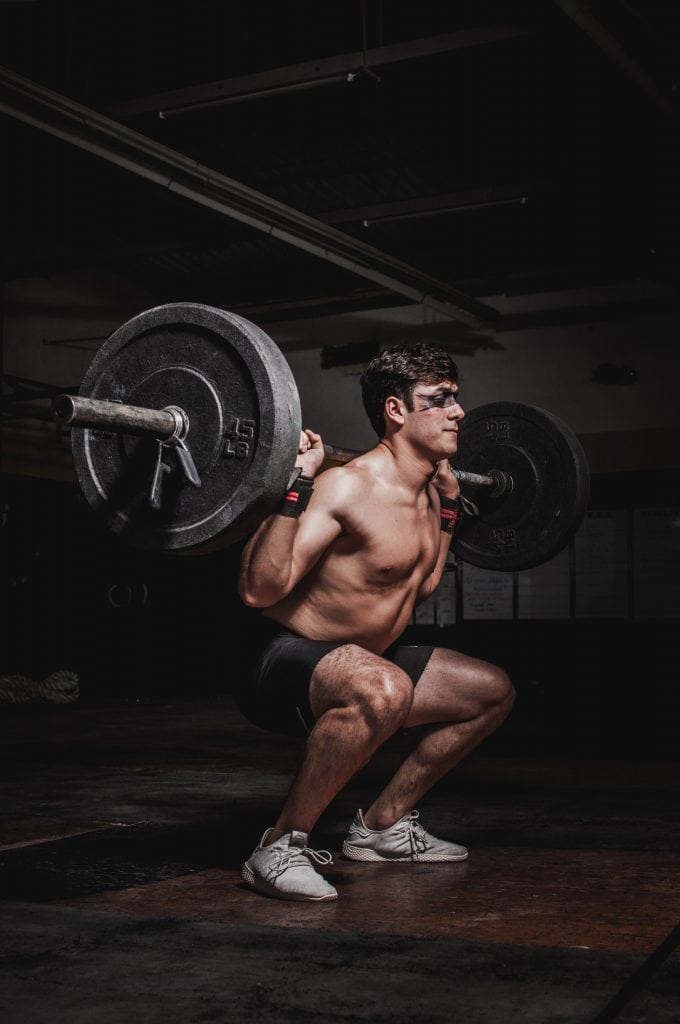
Typically, clinics that have a physician referral relationship, they might be run by entrepreneurs, but they have a physician referral background. There’s a group called Osteostrong that has 13 locations, maybe more than that now, maybe 20 locations now. They’re growing very fast, they’re like a franchise opportunity. It’s great. It’s a small space, kind of a waiting room, they have bioDensity, people come in, I believe its 90/mo, they track your progress, they give you your performance report and do a little analysis there, and the waiting room has a couch and video screen playing testimonials from that specific location so you can understand what’s happening to people when they go through it, which is, it’s a tremendous place, there’s a lot of energy in that location.
There is a chiropractic firm called Be Strong for Life; they take an approach where they take pre and post x-rays and look at the alignment of the spine through bioDensity therapy. They have been nice enough to share some pre and post x-rays where you can see spinal alignment happening. Keep in mind this is without chiropractic adjustments and traction. This is the body realigning itself as a result of that therapy. That’s something that the general public isn’t really aware of how that affects their health. They’re really champions of that education. Most people walk into a chiropractor’s office because they are in pain. Because they want better alignment and better breathing, and better neurological function as a result. But the patients at those facilities end up getting that benefit, and it’s tracked through X-rays. And there are many others. There are 240 locations in the United States where different physicians and different entrepreneur groups have different devices, and people can come and use them.
There are also people who bought the device just to put it in their own home, but it’s expensive, right? How much is the device?
$45,000.
Gotcha.
If you want one in your living room, that’s terrific. But it’s $45,000.
You probably have a Lamborghini in your garage, too, right?
I think for people that time is that valuable, and they obviously have the disposable income and space to put it. That it becomes a very worthwhile investment.
I mean, your health is worth everything. And for folks in a city environment, not in the middle of nowhere, hopefully, there’s a bioDensity machine that you can join, get a membership to, and use the machine there.
There’s actually a location finder on the website.
So I’m in Santa Monica, I believe you told me there are some machines in the LA area.
There’s one in Santa Monica! Great facility. Called “Project Rewire.”
I’m already there. I’m going to set that up for this weekend.
Do it! I recognize the gentlemen who run the facility, he and his wife used to speak at Platinum Events. Tony Melina and Valorie Melina. Oh, right, you know them. So they decided to go ahead and start a bioDensity business or add bioDensity to their existing wellness business. They have an amazing business where it’s called “Fear Extinction,” so they use bioDensity as well as a lot of other tools to get people to overcome some mental barriers by overcoming what they perceive as physical barriers. I’m probably not doing it quite the justice it deserves. But you’ll enjoy going to that facility for sure.
Being a healthy individual, eating the right things, and putting the right amount of force through the body can provide you benefit for your entire life.
Awesome, well, I will do that! Just to wrap up this conversation, what would be one final bit of wisdom or parting knowledge you can give to our listeners?
We’re talking to high school kids, it stays in school, we’re talking to adults is compound interest is really important.
In relation to what we’ve been talking about. Just something health-related. So many people are focused on fixing something that has symptoms instead of maintaining wellness before the problems crop up.
Right. You’ve put it in my mouth. The answer is, really, to not be reactionary but to plan. Plan for your health in the future. When you do that, you make some decisions. Going to the gym isn’t necessarily about looking good, though that might be a result. Or, using bioDensity might not necessarily be about your long-term health, it might be about looking good. Being a healthy individual, eating the right things, and putting the right amount of force through the body, can provide you benefit for your entire life. It’s not just a priority the day after New Year. It should be a priority every day.
Well, thank you, John. That was John Jaquish, CTO and inventor of bioDensity, a technology you absolutely have to check out. Thank you listeners, and we’ll catch you next time.
Important Links
Connect with John Jaquish
Organizations/Companies
People
